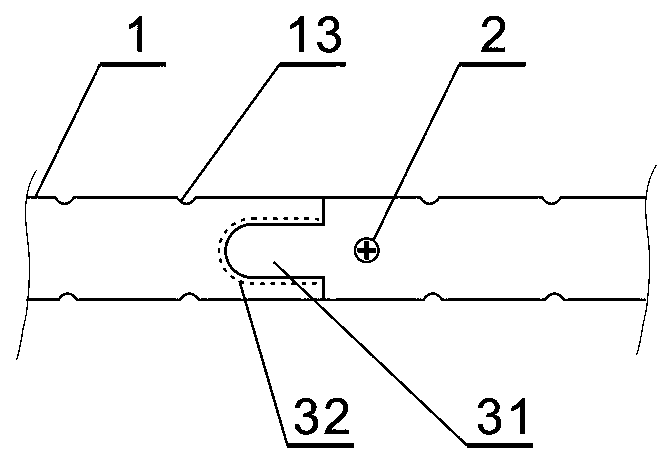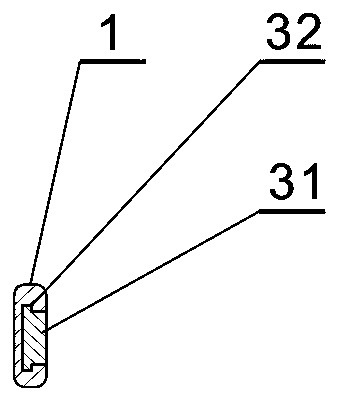Built-in instrument for correcting thoracic deformity
A deformity and device technology, applied in the field of built-in chest deformity correction devices, can solve the problems of large trauma area, many incisions, and increased patient pain, and achieve the effect of less tissue damage, weak foreign body sensation, and pain relief.
- Summary
- Abstract
- Description
- Claims
- Application Information
AI Technical Summary
Problems solved by technology
Method used
Image
Examples
Embodiment
[0024] refer to figure 1 , figure 2 , Figure 5 , the present invention includes a support plate 1 and a locking screw 2. The support plate 1 of the present invention is two pieces, the support plate 1 is arc-shaped, and the arc line matches the chest cavity. The mortise and tenon structure 3 formed by the mortise and mortise is located in the middle of the two supporting plates 1 that are connected to each other; the insertion mortise of the present invention is provided with a through hole 11, and the insertion mortise is provided with a threaded hole 12 for locking The screw 2 engages the through hole 11 on the tenon and the threaded hole 12 on the mortise to fasten the two butt supporting plates 1 .
[0025] When the present invention corrects the pectus excavatum patient, it only needs to open an incision on the front chest of the patient, insert the blunt ends of the two support plates 1 through the incision respectively, one facing the left chest wall and the other f...
PUM
 Login to View More
Login to View More Abstract
Description
Claims
Application Information
 Login to View More
Login to View More - R&D
- Intellectual Property
- Life Sciences
- Materials
- Tech Scout
- Unparalleled Data Quality
- Higher Quality Content
- 60% Fewer Hallucinations
Browse by: Latest US Patents, China's latest patents, Technical Efficacy Thesaurus, Application Domain, Technology Topic, Popular Technical Reports.
© 2025 PatSnap. All rights reserved.Legal|Privacy policy|Modern Slavery Act Transparency Statement|Sitemap|About US| Contact US: help@patsnap.com



